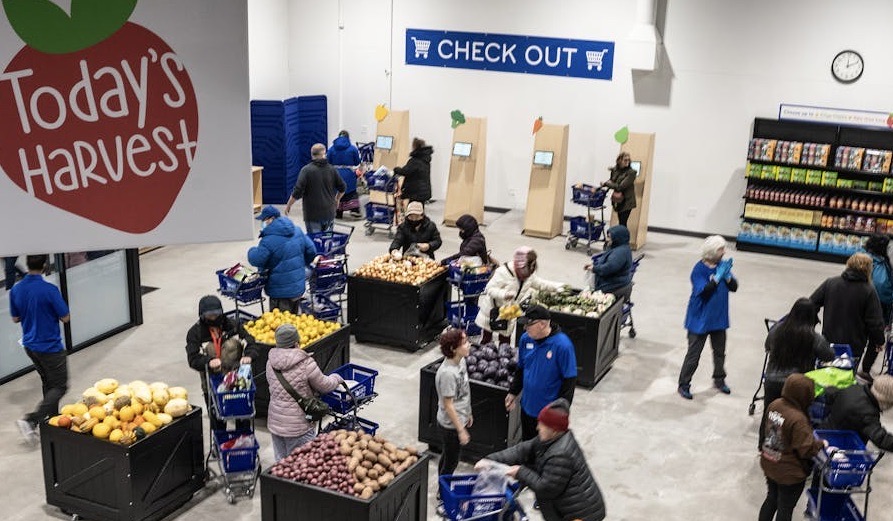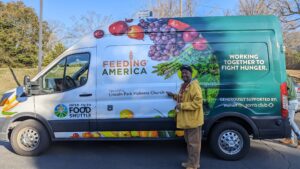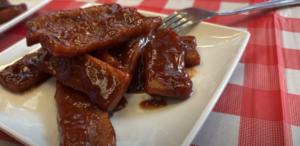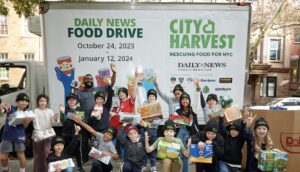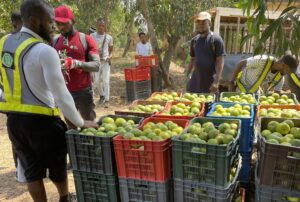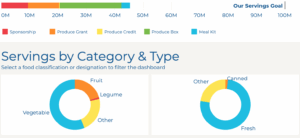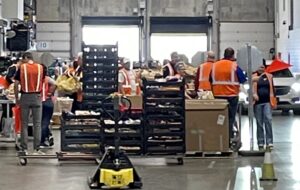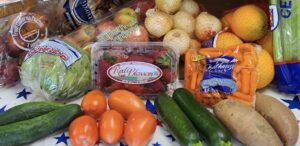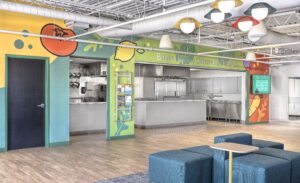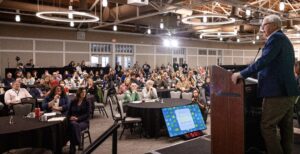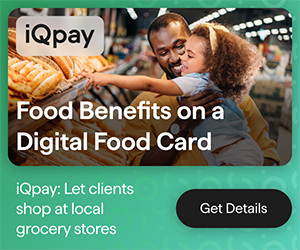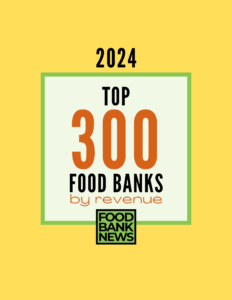During the pandemic, the Minn.-based hunger relief organization Open Cupboard gained two key insights that helped guide the opening of its newest free-food market.
The first was that people don’t want to have to answer a lot of questions to gain access to food. The second was that a community’s ecosystem of food suppliers, including grocery stores and farmers, can be potent partners in hunger relief work.
Both of Open Cupboard’s free-market locations, located outside Minneapolis and known as Today’s Harvest, rely heavily on food donations. Because Open Cupboard keeps barriers low by asking minimal questions from shoppers, the markets do not use food from federal programs like The Emergency Food Assistance Program (TEFAP).
Instead, a fleet of trucks drive around the area picking up surplus food from grocers and farmers markets, with additional product delivered to Today’s Harvest through emerging partnerships with food banks, food hubs and hunger relief partners. “We’re always on the lookout for new sources of food,” said Jessica Francis, Executive Director of Open Cupboard.

Open Cupboard’s approach has required it to develop infrastructure and sow trust, both of which took time. April Rog, a consultant in food rescue and sustainability who is passionate about reducing food waste, helped Today’s Harvest make inroads with grocery stores. During her ten years leading food rescue operations for Minn.-based Second Harvest Heartland, she forged partnerships with local retailers, growing the amount of local food that was rescued from 12 million to 40 million pounds.
Up to 40% of the food produced in the United States is thrown out at a total cost that exceeds $200 billion, according to estimates by the National Resources Defense Council.
“In order to bring products to consumers in a way that appeals to them, grocery stores will always have a little too much food. That’s how a retailer makes their experience feel abundant,” Rog said. “To have the ability to gather that and distribute it, that’s where Today’s Harvest comes in.”
Rog, who also previously worked as a produce manager for a grocery store chain in Minnesota, worked to build up relationships with local food providers. Grocery stores needed to know that Today’s Harvest could give away the rescued food safely and reliably. Trucks had to show up on a predictable schedule and be able to transport temperature-sensitive foods like meat and dairy safely.
Rog credits Minnesotan values against waste for the willingness of food retailers to get on board. Leaders from local grocery and retail partners visit the Today’s Harvest space and regularly donate extra display tables and fixtures to make the store feel as much like a regular grocery store as possible.
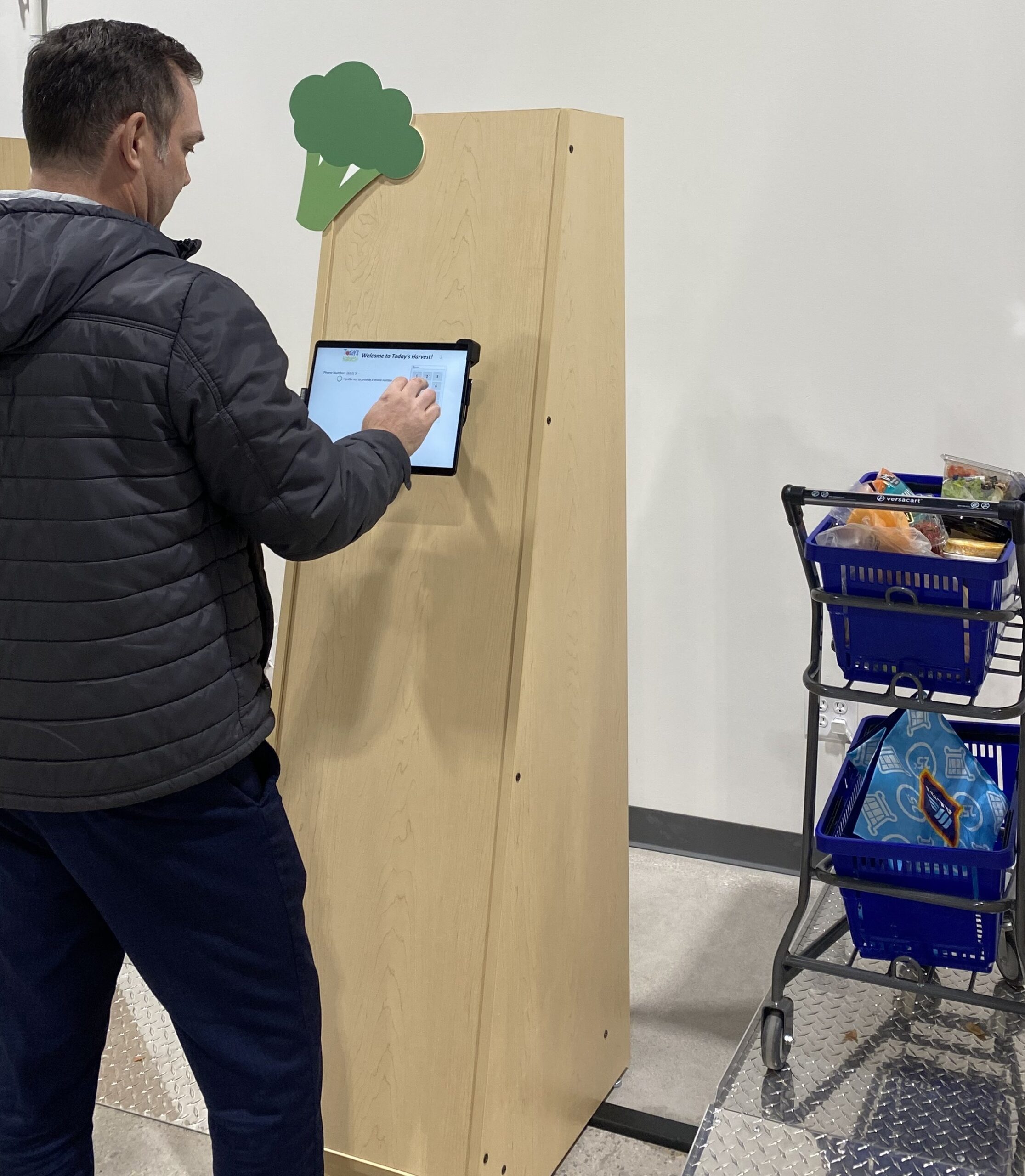
“They’re trusting us with this food that in many cases has their brand name on it,” Rog said. “They are proud of the impact they’re having and so relieved. They are glad to have better methods than the waste stream for perfectly good food.”
By embracing food rescue, Open Cupboard has also been able to appeal to new types of funders that have an interest in tackling food waste. The Minnesota Pollution Control Agency is supporting a meeting and training space where Today’s Harvest intends to help other community organizations learn about its model and replicate it. The new market is also made possible by grants from the Minnesota Department of Agriculture, which helped Today’s Harvest source food from small farmers in the area.
“We’ve been able to expand our funding base by looking at this as a food waste solution,” Francis said.
The new market, which is about a 15-minute drive from the original one, is about twice the size and boasts a large walk-in cooler and freezer that will allow the food bank to accept more surplus food.
To “check out,” shoppers roll their carts onto a scale alongside a kiosk where they can self-record the food weight, as well as their zip code and household size – the only information that they need to provide. People can shop as often as they like (though not more than once a day) and can shop for relatives or neighbors as long as they check out those groceries separately.
Before the second location opened, Today’s Harvest was under strain. Across all of Open Cupboard’s programs – which also include a drive-up service, home delivery and a mobile pantry – the organization has seen visits jump 1081% since 2019.
More people have been traveling from farther away to shop at Today’s Harvest as access to other food programs has become harder, Francis said. Minnesotans made a record 7.5 million food pantry visits in 2023, up by almost 2 million from the year prior.
“The need for food across the Twin Cities metro, and across the state, is just rising and rising,” Francis said. “There are food programs closer to them, but they can’t get in to them, so they’re coming to us.” – Ambreen Ali
Ambreen Ali is a journalist and founding editor of Central Desi, a newsletter about New Jersey’s South Asian community.
Photo credit, top: Jerry Holt, The Minnesota Star Tribune
Like what you’re reading?
Support Food Bank News
